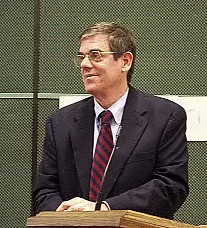"In Sweden, more than 90 per cent of household waste is recycled, reused or recovered. By contrast, Toronto diverts about half of its household garbage from landfill and Ottawa diverts about one-third. Things began to change when the Swedish government made the producers and distributors of goods responsible for the waste they create.
By law, companies are responsible for collecting the entire waste stream stemming from their products, either on their own or through public or private contractors.
Needless to say, there is a strong economic incentive for companies to produce less waste — from products and product packaging — at the outset of manufacturing, rather than deal with it later.
By mixing economic incentives, such as garbage collection fees, with easy access to recycling stations and public awareness campaigns, Sweden has achieved very high recycling rates. In 2004, Swedes recycled 96 per cent of all glass packaging, 95 per cent of metal, 86 per cent of corrugated cardboard and 80 per cent of electronic waste. Waste that cannot be recycled is recovered through other means, often to local economic benefit.
In 2005, Sweden made it illegal to landfill organic waste. Instead, the waste is biologically treated to create compost, biogas and fertilizer. Today, 10 per cent of all household organic waste is treated biologically, a share that is expected to increase dramatically in the near future.
But even reducing, recycling and biological treatment only gets rid of so much. So, like many other European countries, Sweden uses the remaining waste to create energy. Thanks to a well-developed district energy system, household waste is turned into heat and electricity for hundreds of thousands of Swedish homes.
Fifteen years ago, 18 Swedish waste incineration plants emitted a total of about 100 grams of dioxins every year. Today, the collective dioxin emissions from all 29 Swedish waste incineration plants amounts to 0.7 of a gram ... quite an improvement. At the same time, these plants have more than doubled the amount of energy produced in 1985.
Using waste instead of fossil fuels to power district energy systems has also lowered Sweden's greenhouse gas emissions, which are three times lower per capita than in Canada.
But even without all of these environmental benefits, waste incineration makes good business sense. The Sävenäs waste-to-energy plant, located just 200 metres from the nearest residential area, is a case in point.
The plant incinerates about 460,000 tonnes of waste every year to produce heat and electricity, power that is sold to Sweden's deregulated electricity market. The facility cost $286 million to build and, with annual revenues of between $36 million and $70 million, the plant will pay for itself in less than 10 years."








